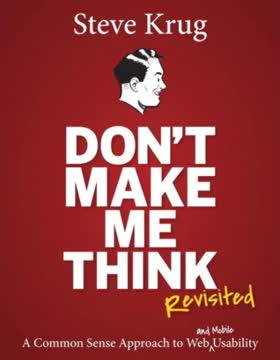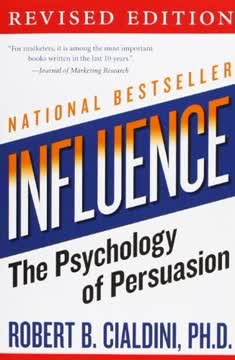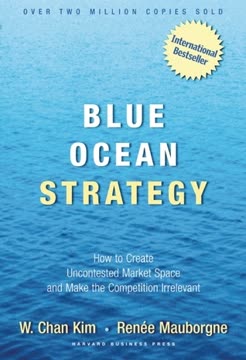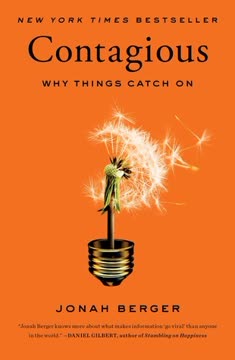Key Takeaways
1. Social Currency: Make people feel like insiders
"If it's hard to see what others are doing, it's hard to imitate it."
Remarkable things provide social currency because they make the people who talk about them seem more remarkable. When we share extraordinary or entertaining content, we become more extraordinary and entertaining ourselves. This makes us more likely to be invited to lunch or on a second date.
Scarcity and exclusivity boost word of mouth by making people feel like insiders. If people get something not everyone else has, it makes them feel special and high-status. Examples include:
- Please Don't Tell speakeasy accessed through a phone booth
- Rue La La's invitation-only flash sales
- McDonald's limited-time McRib sandwich
To leverage social currency:
- Find your product's inner remarkability
- Use game mechanics like progress bars or achievement levels
- Limit access through scarcity or exclusivity
2. Triggers: Create environmental cues for your product or idea
"Top of mind means tip of tongue."
Triggers are stimuli that prompt people to think about related things. They explain why people talk about Cheerios more than Disney World - we encounter cereal far more frequently in daily life. By understanding and leveraging triggers, we can keep our products and ideas top-of-mind.
To use triggers effectively:
- Consider context and frequency of exposure
- Link your product to prevalent environmental cues
- Create new associations through repetition
Examples:
- Kit Kat linked their product to coffee breaks
- Rebecca Black's song "Friday" gets more views on Fridays
- The Mars candy bar saw increased sales during NASA's Mars mission
3. Emotion: Evoke high-arousal feelings to boost sharing
"When we care, we share."
High-arousal emotions drive people to action and sharing. While both positive and negative emotions can be effective, arousal is key. High-arousal emotions like awe, excitement, anger, and anxiety increase sharing. Low-arousal emotions like contentment and sadness decrease it.
To leverage emotion:
- Focus on feelings, not just information
- Aim for high-arousal emotions like awe or anger
- Use the power of storytelling to evoke emotion
Examples:
- Susan Boyle's surprising performance went viral due to awe
- Google's "Parisian Love" ad tells an emotional story through search queries
- Dave Carroll's "United Breaks Guitars" video went viral due to righteous anger
4. Public: Increase visibility of your product or behavior
"Built to show, built to grow."
Observable things are more likely to be imitated and discussed. Making private behaviors public can increase their adoption, as seen with the "I Voted" stickers. Products that advertise themselves, like the distinctive Apple logo or Livestrong bracelets, leverage this principle effectively.
Strategies to increase public visibility:
- Design products that advertise themselves
- Create behavioral residue that sticks around after use
- Make private behaviors public
Examples:
- Movember uses moustaches to make cancer support visible
- Lululemon's reusable shopping bags act as mobile billboards
- Hotmail's email signature advertised the service
5. Practical Value: Provide useful information people want to share
"News you can use."
People like to help others by sharing practical, useful information. This can be in the form of money-saving deals, helpful tips, or important warnings. The key is to package this information in a way that's easy to remember and share.
To leverage practical value:
- Highlight incredible value using the Rule of 100
- Package knowledge and expertise into shareable formats
- Make the value easy to see and understand
Examples:
- Ken Craig's corn-shucking video went viral due to its usefulness
- Vanguard's MoneyWhys newsletter provides shareable financial advice
- The NY Times' most-emailed list often features practical health and education articles
6. Stories: Embed your message in compelling narratives
"Information travels under the guise of idle chatter."
Stories act as Trojan horses for ideas. People don't just share information; they tell stories. By embedding your product or idea within a broader narrative, you can make it more likely to be shared and remembered.
To create effective story-driven content:
- Develop a compelling narrative arc
- Make your product or idea integral to the story
- Ensure the story is not only viral but also valuable to your brand
Examples:
- Blendtec's "Will It Blend?" videos tell a story of extreme product testing
- Dove's "Evolution" video critiques beauty standards while promoting the brand
- The Trojan Horse story has carried its lesson for thousands of years
7. Contagious content requires multiple STEPPS
"The same six principles, or STEPPS, drive things to catch on."
Truly contagious content often leverages multiple STEPPS principles. While using even one principle can be effective, combining several creates a more powerful effect. The STEPPS framework (Social Currency, Triggers, Emotion, Public, Practical Value, Stories) provides a checklist for creating contagious content.
To create contagious content:
- Analyze successful examples using the STEPPS framework
- Identify which principles your current strategy uses
- Look for opportunities to incorporate additional principles
Examples:
- Blendtec's videos use Social Currency, Emotion, and Stories
- The ALS Ice Bucket Challenge used Social Currency, Public, and Emotion
- Dove's "Evolution" video leveraged Emotion, Practical Value, and Stories
8. Word of mouth is more powerful than traditional advertising
"Word of mouth is the primary factor behind 20 percent to 50 percent of all purchasing decisions."
Word of mouth is more effective than traditional advertising for two key reasons:
- It's more persuasive because it comes from trusted sources
- It's more targeted because people naturally share relevant information
Word of mouth advantages:
- More credible than company claims
- Reaches interested audiences more efficiently
- Often occurs at relevant moments of decision-making
While companies still need advertising, harnessing the power of word of mouth can significantly amplify their message and impact.
9. Make private behaviors public to increase adoption
"If it's hard to see what others are doing, it's hard to imitate it."
Making private behaviors public can increase their adoption through social influence. When people can't see what others are doing, they can't imitate it. This principle explains why some behaviors spread quickly while others don't.
Strategies to make private behaviors public:
- Create visible symbols of participation (e.g., Movember moustaches)
- Use technology to share private actions (e.g., Spotify sharing listening habits)
- Correct misperceptions about private behaviors (e.g., anti-binge drinking campaigns)
However, be cautious when publicizing negative behaviors, as this can sometimes normalize them (e.g., anti-drug ads unintentionally suggesting drug use is common).
10. Create valuable virality by integrating your message
"Virality is most valuable when the brand or product benefit is integral to the story."
Effective viral content doesn't just spread; it also benefits the brand. Many viral campaigns fail to boost sales because the content, while shareable, isn't closely tied to the product or brand message.
To create valuable virality:
- Make your product or brand integral to the story
- Ensure the viral element directly relates to your key message
- Design content so people can't retell it without mentioning your brand
Examples:
- Blendtec's "Will It Blend?" videos directly demonstrate product benefits
- Dove's "Evolution" video critiques beauty standards while promoting the brand
- Panda's cheese commercials make the brand name central to the humor
Last updated:
FAQ
What's Contagious: Why Things Catch On about?
- Explores social epidemics: The book examines why certain products, ideas, and behaviors spread like viruses through social networks.
- Introduces STEPPS framework: Jonah Berger presents six principles—Social Currency, Triggers, Emotion, Public, Practical Value, and Stories—that make content contagious.
- Real-world examples: The author uses case studies, such as Blendtec's "Will It Blend?" videos, to demonstrate these principles in action.
Why should I read Contagious: Why Things Catch On?
- Understand virality: Gain insights into why certain ideas and products catch on, valuable for marketers and entrepreneurs.
- Actionable strategies: Learn practical advice on applying the STEPPS framework to make your ideas or products popular.
- Engaging storytelling: The book is filled with captivating stories and research findings, making complex concepts accessible.
What are the key takeaways of Contagious: Why Things Catch On?
- Six principles of contagion: The STEPPS framework guides creating shareable content.
- Importance of social influence: Word of mouth is a powerful driver of consumer behavior, often more effective than traditional advertising.
- Emotional connection matters: Content that evokes strong emotions is more likely to be shared and discussed.
What is the STEPPS framework in Contagious: Why Things Catch On?
- Social Currency: People share things that make them look good or feel special, enhancing social status.
- Triggers: Associating products with frequent cues keeps them top of mind, leading to more discussions.
- Emotion: Content that evokes strong feelings, especially positive ones, is more likely to be shared.
- Public: Making behaviors observable increases the likelihood of imitation and sharing.
- Practical Value: Useful information is often shared, as people like to help others.
- Stories: Narratives that incorporate products or ideas can enhance their shareability.
How does Social Currency work in Contagious: Why Things Catch On?
- Enhances perceived value: Sharing remarkable or exclusive information boosts one's social status among peers.
- Creates insider feelings: People enjoy feeling like they are part of an exclusive group, encouraging them to share unique experiences.
- Example from the book: The $100 cheesesteak at Barclay Prime became a conversation piece, enhancing social currency.
What role do Triggers play in making ideas contagious in Contagious: Why Things Catch On?
- Stimuli for recall: Triggers are cues that remind people of a product or idea, increasing its accessibility.
- Example from the book: The song "Friday" by Rebecca Black gained popularity due to frequent triggers by the day of the week.
- Habit formation: Associating products with common activities can create lasting habits and discussions.
How does Emotion influence sharing according to Contagious: Why Things Catch On?
- Emotional engagement: Content that evokes strong emotions, particularly awe or excitement, is more likely to be shared.
- Physiological arousal: High-arousal emotions drive people to take action, including sharing information.
- Negative emotions: While sadness decreases sharing, emotions like anger can increase it, as seen in Dave Carroll's viral song.
What is the significance of Public visibility in Contagious: Why Things Catch On?
- Imitation drives behavior: When people see others using a product, they are more likely to imitate it.
- Example from the book: The decision to flip the Apple logo on laptops ensured it was visible to others, enhancing brand visibility.
- Social proof: Observing others can motivate individuals to try new products or behaviors.
How can Practical Value enhance the shareability of content in Contagious: Why Things Catch On?
- Useful information: People are more likely to share content that provides practical benefits or solutions.
- Example from the book: Articles offering tips or advice, like saving money, are often shared because they help others.
- Highlighting value: Making the practical benefits of a product clear can encourage sharing among consumers.
How do Stories function as vessels in Contagious: Why Things Catch On?
- Definition of Stories: Stories carry information and ideas, making them more engaging and memorable.
- Embedding messages: A well-crafted story can embed a product within a narrative, allowing it to be shared naturally.
- Examples of effective storytelling: Berger discusses Dove’s “Evolution” campaign, which used storytelling to address beauty standards.
What are some effective strategies for making ideas contagious according to Contagious: Why Things Catch On?
- Leverage the STEPPS framework: Incorporate Social Currency, Triggers, Emotion, Public visibility, Practical Value, and Stories into marketing strategies.
- Create remarkable content: Focus on making products or ideas that stand out and are worth talking about.
- Encourage sharing through visibility: Make behaviors and products observable, creating opportunities for social proof and imitation.
What are the best quotes from Contagious: Why Things Catch On and what do they mean?
- “When we care, we share.” Emphasizes the importance of emotional engagement in driving word of mouth.
- “Top of mind means tip of tongue.” Highlights how frequent triggers can keep products accessible, leading to more discussions.
- “Remarkable things are worthy of remark.” Underscores that standout products or ideas are more likely to be shared.
Review Summary
Contagious: Why Things Catch On explores why certain ideas and products become popular. Reviewers find it informative and entertaining, praising Berger's accessible writing style and use of real-world examples. Many appreciate the practical marketing insights, though some feel the content is basic or repetitive. The book's STEPPS framework (Social Currency, Triggers, Emotion, Public, Practical Value, Stories) is highlighted as a useful tool. While some critics argue it lacks depth, most readers find value in its analysis of viral trends and social influence.
Similar Books






Download PDF
Download EPUB
.epub digital book format is ideal for reading ebooks on phones, tablets, and e-readers.








